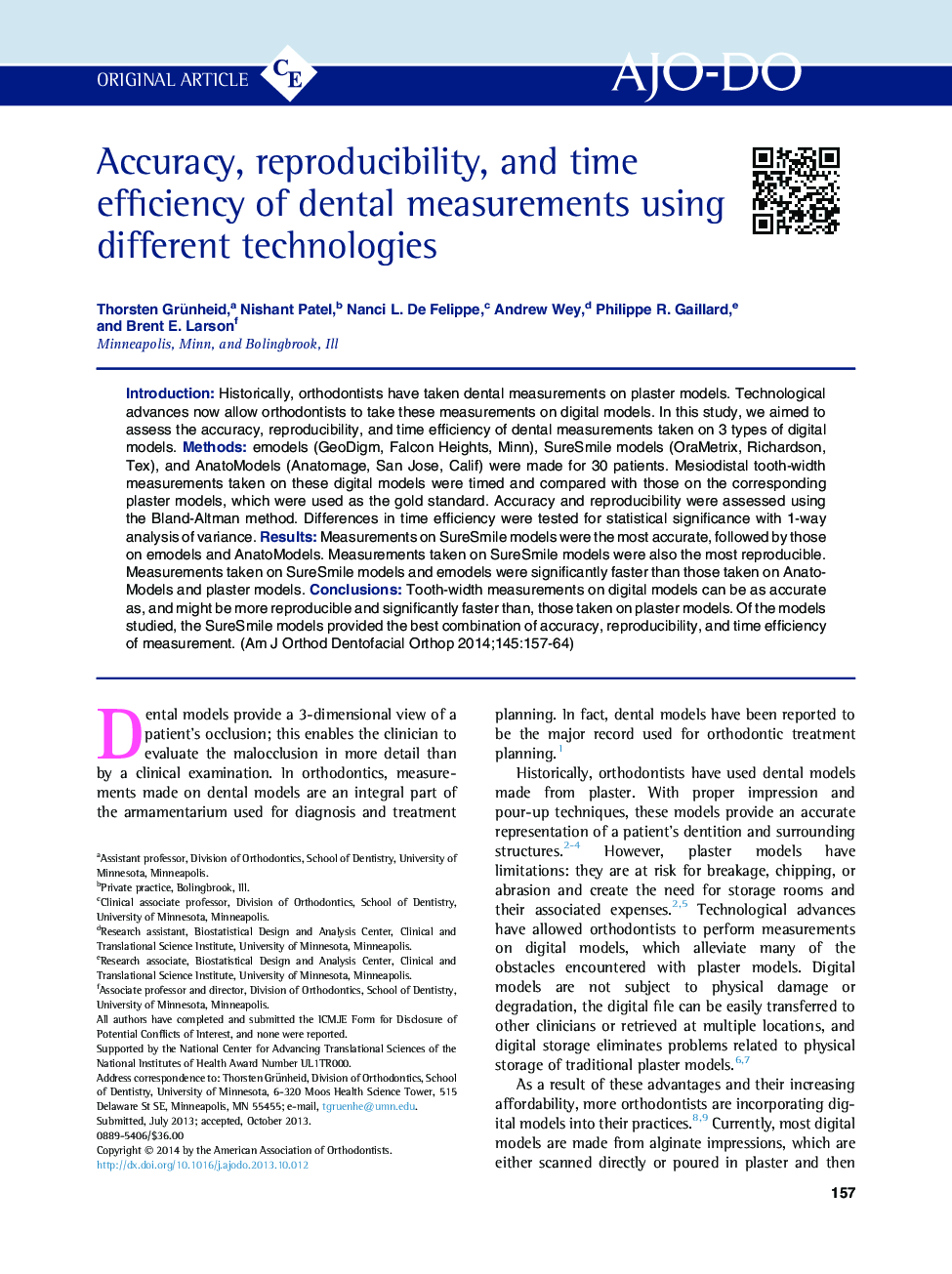| Article ID | Journal | Published Year | Pages | File Type |
|---|---|---|---|---|
| 3116782 | American Journal of Orthodontics and Dentofacial Orthopedics | 2014 | 8 Pages |
IntroductionHistorically, orthodontists have taken dental measurements on plaster models. Technological advances now allow orthodontists to take these measurements on digital models. In this study, we aimed to assess the accuracy, reproducibility, and time efficiency of dental measurements taken on 3 types of digital models.Methodsemodels (GeoDigm, Falcon Heights, Minn), SureSmile models (OraMetrix, Richardson, Tex), and AnatoModels (Anatomage, San Jose, Calif) were made for 30 patients. Mesiodistal tooth-width measurements taken on these digital models were timed and compared with those on the corresponding plaster models, which were used as the gold standard. Accuracy and reproducibility were assessed using the Bland-Altman method. Differences in time efficiency were tested for statistical significance with 1-way analysis of variance.ResultsMeasurements on SureSmile models were the most accurate, followed by those on emodels and AnatoModels. Measurements taken on SureSmile models were also the most reproducible. Measurements taken on SureSmile models and emodels were significantly faster than those taken on AnatoModels and plaster models.ConclusionsTooth-width measurements on digital models can be as accurate as, and might be more reproducible and significantly faster than, those taken on plaster models. Of the models studied, the SureSmile models provided the best combination of accuracy, reproducibility, and time efficiency of measurement.
